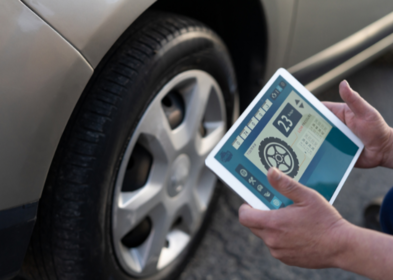
09/03/2023
New possible worlds in the tyre’s ecosystem
Guido Gambassi
The tire industry is carrying out important innovations, both in terms of products and in terms of management of the entire "ecosystem"
The technological development that has been taking place within the automotive world in recent years, has been so profound and rapid that it is now part of the very nature of the industry, increasingly identified with models of continuous innovation: every month we witness the launch of new car models, or new versions of cars already established on the market, with new engines, new accessories, new digital systems. Even the tyre industry, perhaps with less publicity and glamour, has nonetheless produced significant innovations that have substantially improved product performance: the last few years were marked by the launch of new tyres optimized in parameters such as rolling resistance (which translates into energy efficiency), wet grip (and thus safety), and mileage (or longer life span).
There are, however, several other breakthroughs in the world of tyres, which concern not so much the product itself but its entire “ecosystem”. Besides impressive leaps forward in terms of design and production processes - increasingly based on factors such A.I., virtual testing, automation, etc. – another key aspect, often underestimated though promising, concerns technologies linked to data: information that “follows” a tyre throughout its life cycle, and that could become the key to making a further substantial leap forward in all the segments of the supply chain. We find a perfect example of this potential in RFID technology, which many manufacturers are now beginning to integrate into their tyres: the radio frequency identification system, offers the possibility to identify and match the product with a series of information that could be used in countless ways and with great benefits. Let’s think about placing the product on the market: the payment of the environmental contribution could be recorded directly on the tyre’s RFID device, to the benefit of traceability, environmental management and legality. Now think about tyre management in the workshop: direct “communication” between RFID and workshop equipment will maximise speed and accuracy of processes. Think of transport fleet management, and the advantages offered by these systems in monitoring mileage in real time and other ser-vice data. In addition, one cannot help wondering at the potential advantages for the retreading industry: data on the tyre’s lifecycle and its technical specs could be used to find out the exact buffing diameter to be set, but also whether it has undergone a similar process in the past, etc. Finally, ELT disposal: now that the new frontier of chemical recycling of ELT’s is opening, it can be useful to know exactly which elements and components can be extracted to obtain secondary raw materials.
And that is not all: by reading each tyre taken from stock, the RFID device also optimizes inventory management; moreover, the tyre itself could send relevant details to the billing system, resulting in a huge time saving to the administrative staff. RFID technology also allows theft tracking! As a matter of fact, today’s technologies already make the aforementioned possible. To better grasp the essence of future tyre service, we must apply all this to a tyre specialist’ actual needs, because we need to always remember that no matter if electric, hydrogen-fuelled, connected or used for car sharing, a vehicle will always be moving on tyres, which will eventually require assistance from a tyre specialist.
There are, however, several other breakthroughs in the world of tyres, which concern not so much the product itself but its entire “ecosystem”. Besides impressive leaps forward in terms of design and production processes - increasingly based on factors such A.I., virtual testing, automation, etc. – another key aspect, often underestimated though promising, concerns technologies linked to data: information that “follows” a tyre throughout its life cycle, and that could become the key to making a further substantial leap forward in all the segments of the supply chain. We find a perfect example of this potential in RFID technology, which many manufacturers are now beginning to integrate into their tyres: the radio frequency identification system, offers the possibility to identify and match the product with a series of information that could be used in countless ways and with great benefits. Let’s think about placing the product on the market: the payment of the environmental contribution could be recorded directly on the tyre’s RFID device, to the benefit of traceability, environmental management and legality. Now think about tyre management in the workshop: direct “communication” between RFID and workshop equipment will maximise speed and accuracy of processes. Think of transport fleet management, and the advantages offered by these systems in monitoring mileage in real time and other ser-vice data. In addition, one cannot help wondering at the potential advantages for the retreading industry: data on the tyre’s lifecycle and its technical specs could be used to find out the exact buffing diameter to be set, but also whether it has undergone a similar process in the past, etc. Finally, ELT disposal: now that the new frontier of chemical recycling of ELT’s is opening, it can be useful to know exactly which elements and components can be extracted to obtain secondary raw materials.
And that is not all: by reading each tyre taken from stock, the RFID device also optimizes inventory management; moreover, the tyre itself could send relevant details to the billing system, resulting in a huge time saving to the administrative staff. RFID technology also allows theft tracking! As a matter of fact, today’s technologies already make the aforementioned possible. To better grasp the essence of future tyre service, we must apply all this to a tyre specialist’ actual needs, because we need to always remember that no matter if electric, hydrogen-fuelled, connected or used for car sharing, a vehicle will always be moving on tyres, which will eventually require assistance from a tyre specialist.










